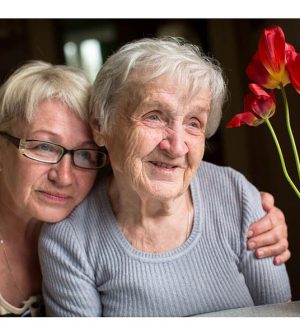- Skip Storing This Everyday Product in the Fridge Door
- Green Tea + B3 Pairing May Boost Brain Health
- Navigating Your Midlife Crisis: Embracing New Possibilities
- City Raccoons Showing Signs of Domestication
- Mapping the Exposome: Science Broadens Focus to Environmental Disease Triggers
- One Week Less on Social Media Linked to Better Mental Health
- Your Brain Changes in Stages as You Age, Study Finds
- Some Suicide Victims Show No Typical Warning Signs, Study Finds
- ByHeart Formula Faces Lawsuits After Babies Sickened With Botulism
- Switch to Vegan Diet Could Cut Your Greenhouse Gas Emissions in Half
Some Folks Do Age Slower Than Others

THURSDAY, March 198 2021People really do vary in how fast they age, and the divergence starts in young adulthood, a new study suggests.
The researchers found that by the tender age of 45, people with a faster pace of “biological aging” were more likely to feel, function and look far older than they actually were. And that relative sprint toward old age began in their 20s.
The findings, the study authors said, suggest we need to take a different view of aging.
“Aging is a lifelong process. It doesn’t suddenly begin at the age of 60,” said lead investigator Maxwell Elliott, a doctoral student at Duke University in Durham, N.C.
Anyone who has ever known a spry, sharp-as-a-tack 80-year-old — or a 50-year-old burdened with health problems and disabilities — knows that chronological age does not tell the whole story.
The concept of biological aging — or the speed at which body systems decline over time — acknowledges that.
But it’s not clear exactly when people begin to diverge in their rate of biological aging, Elliott said.
The new findings suggest that split happens fairly early in life.
For the study, Elliott and his colleagues used data on more than 1,000 New Zealanders who have been followed since birth, in the 1970s, to age 45. The pace of their biological aging was tracked starting at age 26, based on measures like body fat, heart fitness, lung capacity, markers of inflammation in the blood, and even cavities.
It turned out that, indeed, people varied widely in biological aging: The slowest ager gained only 0.4 “biological years” for each chronological year in age; in contrast, the fastest-aging participant gained nearly 2.5 biological years for every chronological year.
And by age 45, rapid biological agers were already showing some health indicators normally associated with old age. Compared with their peers, they moved more slowly, had weaker grip strength, and more problems with balance, vision and hearing.
Differences in mental sharpness were clear, too, the researchers found.
On average, rapid agers scored lower on tests of memory performance, and they generally reported more forgetfulness in daily life. Meanwhile, MRI scans showed they typically had more signs of brain-tissue thinning.
The findings were published online March 15 in the journal Nature Aging.
Elliott said he was surprised by the extent of the aging differences at the relatively young age of 45.
And, he said, they were significant enough for people to notice them in daily life. Rapid agers typically said they felt older than they were, for example, and doubted they would live to see the age of 75.
If that weren’t enough, they also looked older than their age, based on independent raters who viewed study participants’ facial images.
Dr. Sofiya Milman is director of human longevity studies at Albert Einstein College of Medicine’s Institute for Aging Research, in New York City.
Like Elliott, she noted that aging does not “magically start at age 60.”
“Aging is a continuum,” said Milman, who reviewed the findings. “And it probably starts even earlier than we’ve recognized.”
As for what determines a person’s rate of biological aging, Milman said genes play a role. There are certain “longevity genes” that can help shield people from environmental stressors, to a degree.
But aging is not set in stone. Both Milman and Elliott said environment matters, from lifestyle choices to exposures to chronic stress and poverty.
It’s clear that regular exercise, a healthy diet and not smoking can reduce the risks of various diseases. And those are things people can do now, Milman said.
In the future, though, she said researchers also want to translate what they’re learning about the aging process into medications that can be given to the right people at the right time.
For some people, Milman said, a healthy lifestyle, on its own, is not enough.
Both researchers stressed that people who feel “old” in their 40s need not despair: It’s never too late to get a check-up, rein in your blood pressure, or start exercising and eating better.
“Midlife is a great time to address these things,” Elliott said. “We can’t change the past, but there’s still a lot of time to intervene.”
The broader point, he said, is that “we need to stop putting so much emphasis on chronological age.”
Intervening earlier to address rapid biological aging could save lives, and improve quality of life, Elliott said.
More information
The U.S. National Institute on Aging has more on the biology of aging.
SOURCES: Maxwell Elliott, PhD student, department of psychology and neuroscience, Duke University, Durham, N.C.; Sofiya Milman, MD, MS, associate professor, medicine, and director, human longevity studies, Institute for Aging Research, Albert Einstein College of Medicine, Bronx, N.Y.; Nature Aging, March 15, 2021, online
Source: HealthDay
Copyright © 2025 HealthDay. All rights reserved.










